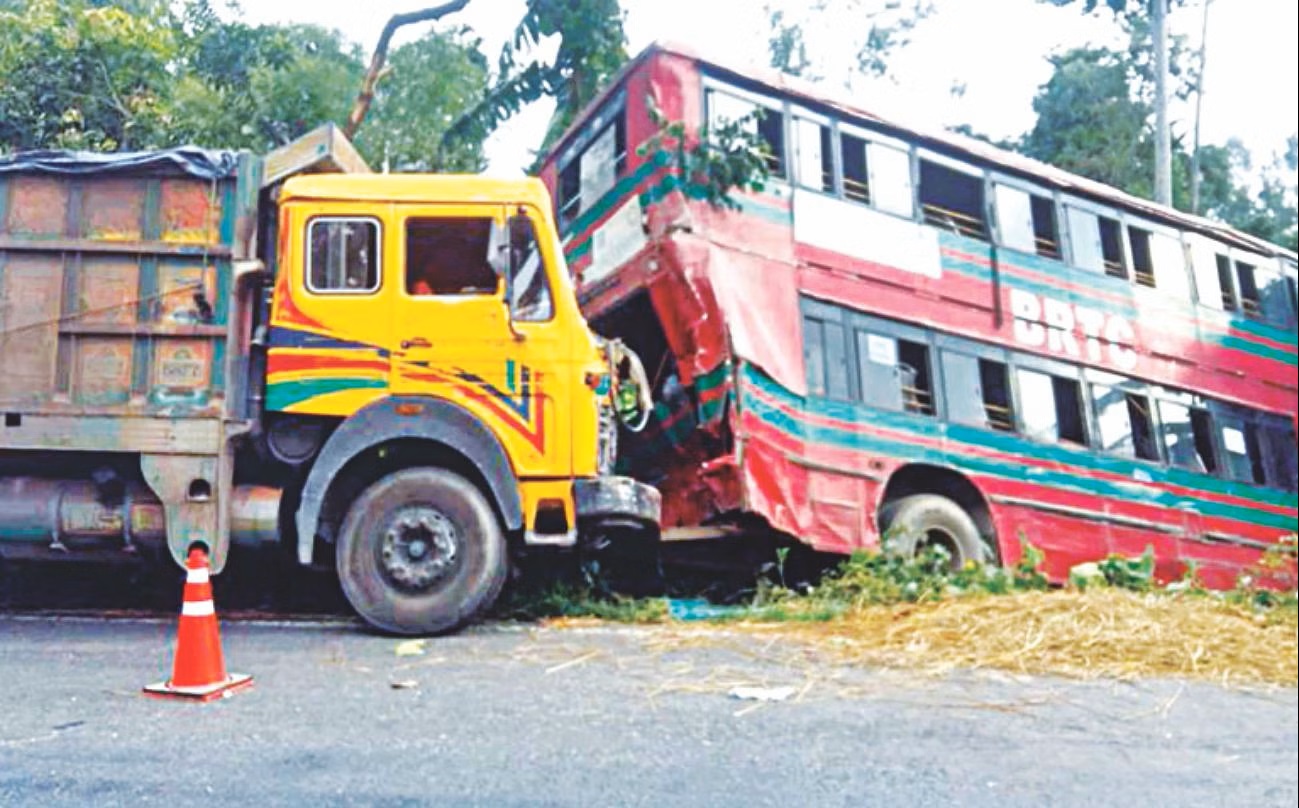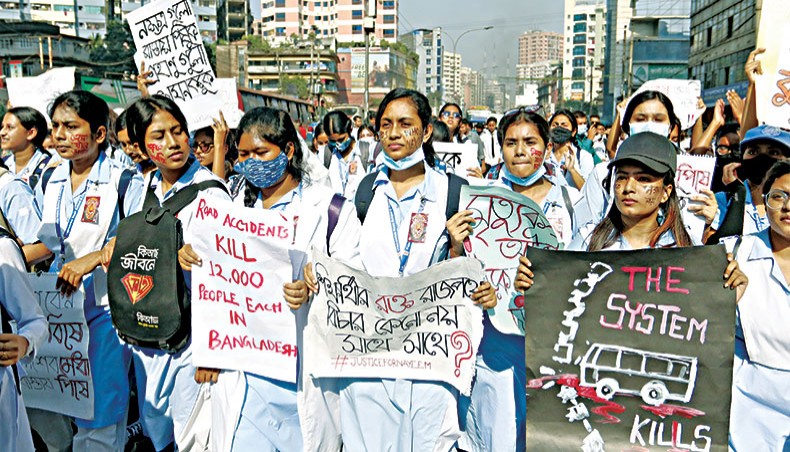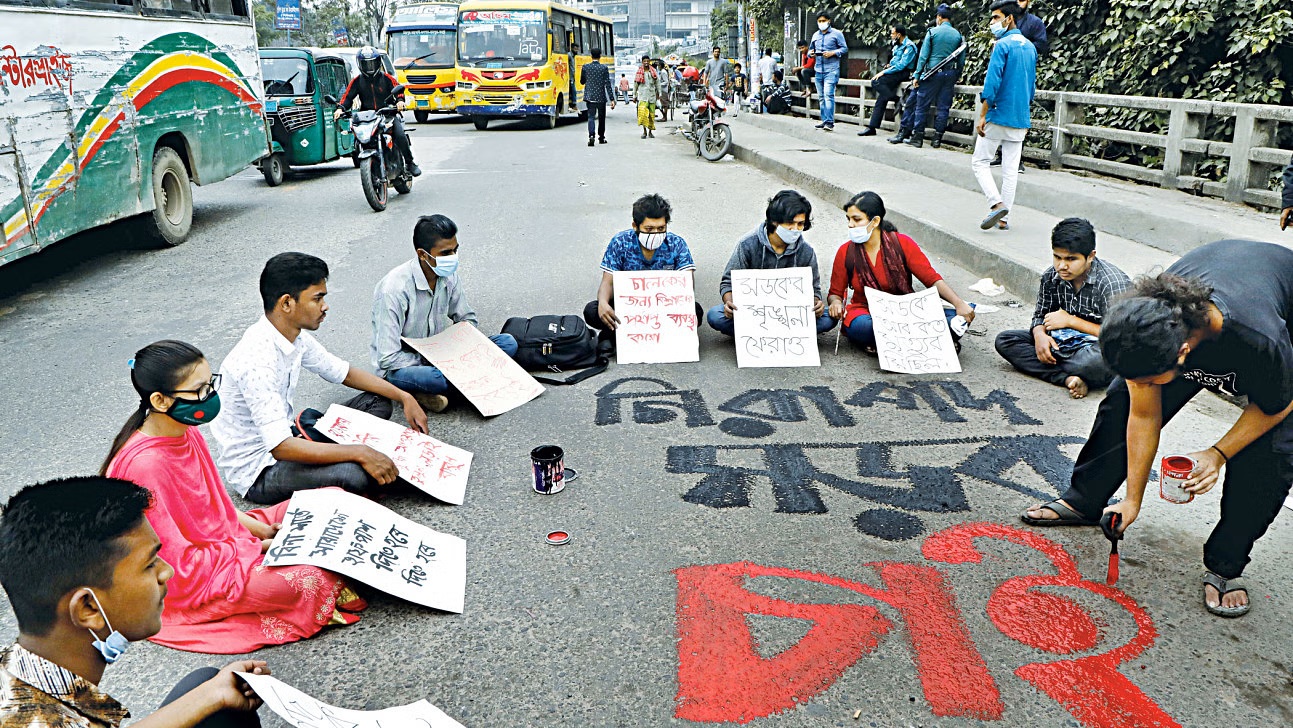22. Description: Please provide a short description of the project in 150 to 200 words describing the project’s objectives, results achieved, and impact generated.
BNNRC has implemented Building Media Professionalism for Road Safety through Constructive Journalism in Bangladesh. The objective was to intensify media interest in and understanding of road safety as a critical health and development issue share the burden of road crashes in Bangladesh and report challenges with the journalists focusing safe system approach, informing and educating journalists on the importance of preventing road. Selected potential Journalists for training and fellowship for in-depth Road safety journalism.
WHO ‘Global Status Report on Road Safety 2023’ mentioned road crashes are the leading cause of death for people aged 5-29 years worldwide. Road crashes still cause a large and increasing number of fatalities and severe injuries, particularly in developing countries. Sustained declining trends of road fatalities in developed countries have been attributed to concerted efforts effective coordination, community connection, well-researched road safety ingenuities, road safety good practices, and improved targeting of resources.
For in-depth reporting and building the capacity for reporting doing advocacy and other interventions through using ICT and AI for data collection and analysis to draw the attention of the policymakers and find out challenges and ways forward for the achievement of SDG 3:6 and 11:2 for utilizing the media all domain.

Result
After the Capacity Building Training, the journalists are aware and sensitized about the importance of preventing road crashes and they are also encouraged to publish and produce more reports on Road safety issues following the safe system approach.
The Fellowship program provided an opportunity for the journalists to produce investigative and in-depth reports on the importance of preventing road crash-related issues, problems faced to get quality data, and so on with the guidance of the assigned mentors (senior journalists) they learned how to produce the in-depth reports. The Fellows were also encouraged to produce more reports on Road safety issues following the safe system approach.
Project website
Geographical coverage
The project was implemented across the country.
28. Other target beneficiary group(s)
The programs have benefitted all community people as a whole by Building Media Professionalism for Road Safety through Constructive Journalism in Bangladesh
29. Please describe how and where this project is replicable.
The activities are to be implemented across the country to achieve SDG-3.6 Road traffic injuries: By 2030, halve the number of global deaths and injuries from road traffic accidents and 11.2, Affordable and Sustainable Transport Systems. The country particularly journalists involved in working with the identification to gear up the governance process in implementing government initiatives for promoting road safety issues. Concerned Service Providers who are positive for providing their services, will be carried out through a series of programs, which is replicable in any community to improve road crashes.
Journalists have always inspired people to share opinions to address road safety issues. Besides, it would be used as a tool for both active and passive communication and outreach worldwide. Civil society organizations can play a vibrant role in replicating the program. This approach can be replicated in other countries of the world.

30. Please describe how this project is sustainable.
Two SDG targets concerning road safety: Target 3.6 was aimed at reducing global crash-related deaths and injuries to half, while Target 11.2 was aimed at providing access to safe, affordable, accessible and sustainable transport systems as well as improving road safety for all. While the government has met many other SDG targets successfully, the road safety targets remain a challenge by a big border due to lapses in undertaking a professional and systematic road safety program as well as monitoring the implementation of the same. A safe system approach should, ideally, address the interaction among speed, vehicles, road infrastructure, and road user behavior leading to reductions in road crashes.
The project provided various support to the journalists for in-depth reporting on road safety issues in Bangladesh. The ability of the journalists can play a very pivotal role in making the program sustainable which has been enhanced through the intervention’s community, local, and national levels. The journalists understand how harm and falsity are ways of thinking about ‘information disorder’. The project interventions provided a prospect for the journalist to work as a champion for road safety issues in Bangladesh.
31. How does this project promote WSIS values in your community?
The project aims to provide capacity-building for journalists regarding road safety issues in Bangladesh which is very essential for stimulating road safety through using Constructive Journalism for achieving the SDGs.
32. Contribution to the implementations of WSIS Action Lines and the Sustainable Development Goals
Please describe how the project contributes to the implementation of the selected WSIS Action Lines and Sustainable Development Goals.
Through this intervention, WSIS values (Action line- C9) in Bangladeshi journalists are strongly adhered and promoted extensively using ICT and AI. This is done by building the capacity of journalists to ensure road safety is a critical health issue.
Sustainable Development Goals (SDGs)
The capacity-building programs achieved through this project are linked to the SGDs in the following ways:
SDG-3.6 Road traffic injuries: By 2030, halve the number of global deaths and injuries from road traffic accidents: The initiative helps journalists to write in-depth evidence-based reporting in Bangladesh
SDG-5. Achieve gender equality and empowerment of women journalists: The program provided support for women journalists on the issue of constructive journalism primarily focused on developing credible news for the community.
SDG-8. Promote sustained, inclusive, and sustainable economic growth, full and productive employment, and decent work for all: The initiatives developed and certified digital competencies for the journalists in various levels that help to employment and decent work
SDG-9.C- Significantly increase access to information and communication technology and strive to provide ubiquitous and affordable access to the Internet in the least developed countries by 2020: The initiatives help to mobilize and aware the media houses for meaningful access to information and communications technology at a different level on road safety issue.
11.2-Affordable and Sustainable Transport Systems: The journalists involved in the initiative work with the identification to gear up the governance process in implementing government initiatives for promoting road safety issues.
SDG-16. Promote peaceful and inclusive societies for sustainable development, provide access to justice for all, and build effective, accountable, and inclusive institutions at all levels: The initiative was focused on the topics of peace and inclusion and producing credible news and information contributing to SDGS-16.2 in particular.

Implementing partners
BNNRC has implemented the project directly.
Impact
The journalists using technologies and AI for data collection and analysis are working for Building Media Professionalism for Road Safety through Constructive Journalism in Bangladesh. The government initiatives to improve road safety issues as well as discuss some new and important issues like the safe system approach, global decade of action, global road safety reports, other initiatives to save lives after road crashes, and so on. The initiative provided in-depth knowledge to the participants with much information and all levels of stakeholders promised that they would take the necessary steps to improve the road safety situation of the area which has created a new way for road safety issues the community benefitted and the learnings will exercise by their own in future. It is hoped that the issues highlighted in the report in the media will be able to play a helpful and effective role in ensuring the provision of quality support to reduce fatalities in road crashes and their consequences.
Challenges and future perspectives for the project
Mobilizing media on the theme would be a huge task with limited data and information from the ground. The road crash fatalities are much lower than before. In this regard, due to the awareness and proper role of journalists and media, we are moving forward to achieve the goals of SDGs in Bangladesh. Bangladesh’s development and GDP growth rate deserve praise. We are gradually becoming a middle-income country from a low-income country. Compared to that, more attention should be paid to improving the road safety issue in Bangladesh. Road safety issues should be made more dynamic. The development of the communication sector should be viewed holistically.

Extended Description
More investment in the communication and health sector should be made. Communication and Health care both need to be developed in coordination with the public and private sectors and proper utilization of what is available. In addition to the initiatives that have already been taken, a more effective role should be taken in implementing them. By implementing these initiatives, it will be possible to ensure health for all. It is also possible to implement the Sustainable Development Goals (SDGs), especially SDG-3: Road traffic injuries: By 2030, halve the number of global deaths and injuries from road traffic accidents, 11.2: Affordable and Sustainable Transport Systems achieving SDG-16 targets sustainable development to promote peaceful and inclusive societies, facilitate access to justice for all and build effective, accountable and inclusive institutions at all levels will be possible.
Using of AI
The support of AI has been used during the process of research data gathering and data analysis to improve the quality evaluation and to efficiently utilize the frequency data to write new reports. For example, AI is being used to generate access services such as captioning and signing far faster and more accurately.
About: BNNRC
Bangladesh NGOs Network for Radio and Communication represents the community media sector to Government, Industry, Regulatory Bodies, Media, and Development Partners.
BNNRC has been struggling for the last 20 years to open up the community media (including Community Radio and Community Television) and focus on its vital role as the voice of the voiceless rural people. The reality today is that the bondage between the community people and local-level community radio stations is getting strengthened daily. Community Radio has now become their part of life and livelihood.
www.bnnrc.net | bnnrcbd@gmail.com |



